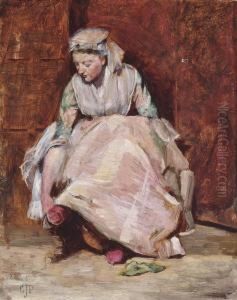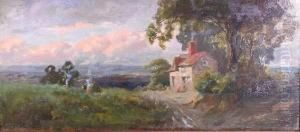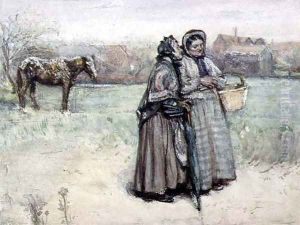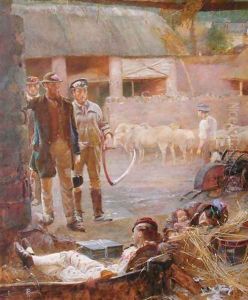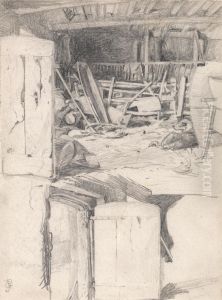George John Pinwell Paintings
George John Pinwell was a distinguished British illustrator and watercolour painter born on December 26, 1842, in London, England. Pinwell's career was relatively short-lived due to his untimely death at the age of 32, but during his brief period of activity, he managed to establish himself as one of the leading lights of the Victorian illustration and watercolour movement.
Pinwell's artistic inclinations were evident from an early age, and he pursued formal training at the South Kensington School of Art, which is now known as the Royal College of Art. He began his professional life as an apprentice to the engraver James D. Cooper. This apprenticeship was instrumental in honing his skills in draughtsmanship and understanding of the printing process, which later influenced his work as an illustrator.
During the 1860s, Pinwell's illustrations began to appear in prominent periodicals of the time, such as the 'Cornhill Magazine' and 'Good Words'. He also illustrated various books, including a notable edition of George Eliot's 'Silas Marner' and a series of children's books. His illustrations were characterized by their dynamic compositions, fine detail, and the ability to convey narrative and emotion effectively. Pinwell was associated with the Idyllic School of painters, a group that sought to portray rural life in an idealized manner.
As a painter, George John Pinwell was particularly renowned for his watercolours, a medium in which he excelled. His style was marked by a delicate touch and a keen observation of nature and rural life. He was a member of the prestigious Royal Watercolour Society and exhibited his works at the Royal Academy and other notable galleries.
Pinwell's promising career was cut short when he contracted a fatal illness. He continued to work despite his deteriorating health, but eventually succumbed to his sickness on September 8, 1875. Although his career spanned only a little more than a decade, George John Pinwell left behind a legacy that had a lasting impact on the world of Victorian art. His works continue to be appreciated for their charm, technical proficiency, and their reflection of the social and pastoral themes of the time.

